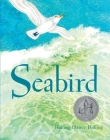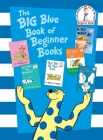Seabird sounds marvelous, and certainly something I'd like to check out with Eleanor when she comes back from the brief spring break jaunt to Mystic. As you mentioned in your last post, she has recently been captivated by a series chock-full of historical detail: the Little House books.
I'm betting that pretty much anyone reading this blog has some familiarity with Laura Ingalls Wilder's saga of her family's time as pioneer settlers in the American West. When I was a kid, the TV series starring Melissa Gilbert was running, and I had friends who were obsessed with it, reading all the books repeatedly and role-playing Little House games. Sun bonnets abounded.
That wasn't me. I'm pretty sure I read all nine books, because I'm a completist that way, but they weren't stories I reread. What I retained as an adult were brief snippets of scenes -- Laura making and eating maple syrup candy by pouring it over snow; Pa running a rope between the house and the barn in the middle of the winter so he wouldn't get lost in the six-foot snowdrifts -- and the feeling that the books were otherwise a little dull. I'd forgotten most of the narrative entirely.
Two and a half books in with Eleanor, I've fallen in love with them, and so has she.

 We're reading in chronological order, so we began with Little House in the Big Woods and Farmer Boy, and are now in the middle of Little House on the Prairie. In the first book, Laura is five, living in a log cabin in the woods of Wisconsin with her parents (Ma and Pa), her big sister Mary, and her little sister Carrie. Farmer Boy is the story of Almanzo Wilder, who grows up to be Laura's husband. He's nine years old, living on a large, successful farm in upstate New York with his parents (Mother and Father) and three older siblings. Laura and her family don't figure into the book at all, except that readers know what Almanzo's future holds. In Little House on the Prairie, Pa gets wanderlust, and packs up the family to move West in a covered wagon.
We're reading in chronological order, so we began with Little House in the Big Woods and Farmer Boy, and are now in the middle of Little House on the Prairie. In the first book, Laura is five, living in a log cabin in the woods of Wisconsin with her parents (Ma and Pa), her big sister Mary, and her little sister Carrie. Farmer Boy is the story of Almanzo Wilder, who grows up to be Laura's husband. He's nine years old, living on a large, successful farm in upstate New York with his parents (Mother and Father) and three older siblings. Laura and her family don't figure into the book at all, except that readers know what Almanzo's future holds. In Little House on the Prairie, Pa gets wanderlust, and packs up the family to move West in a covered wagon.They make for excellent read-alouds. Laura Ingalls Wilder's writing is clear, clean, and at times quite poetic. Here she is describing six-year-old Laura's impressions of the log cabin Pa is building on the Oklahoma prairie:
Laura couldn't wait to see the inside of the house. As soon as the tall hole was cut, she ran inside. Everything was striped there. Stripes of sunshine came through the cracks in the west wall, and stripes of shadow came down from the poles overhead. The stripes of shade and sunshine were all across Laura's hands and her arms and her bare feet. And through the cracks between the logs she could see stripes of prairie. The sweet smell of the prairie mixed with the sweet smell of cut wood.The level of detail in the books is tremendous, and you get a feel for how insanely much work farm families had to do in the late 1800s, and how good every family member was at doing it all. In Little House in
the Big Woods, there are descriptions of making cheese (first you need to kill a calf to get the rennet from its stomach lining), harvesting straw and braiding it to make straw hats, and how to get honey (ladle it into tubs from a dead tree after scaring off a bear). When Pa wants to go hunting, he melts pieces of lead over the fire the night before, then pours the result carefully into his bullet mold. Everything is handmade. One effect of reading all of this in the comfort of my 21st-century life is to make me feel comparatively incompetent.
In Farmer Boy, the descriptions of how to do and make those things necessary for a good farming life are, if anything, even more specific. The book sometimes feels like an instruction manual for the self-sufficient life: here's how to plant potatoes, or put together a child-size bobsled, or train young oxen to pull a sled bearing a load of logs. A couple of weeks ago, Eleanor asked me what Almanzo used to brush his hair. I said I didn't know -- it's one detail Wilder leaves out -- and she said, "They probably took a piece of stone and drilled holes in it and attached pieces of straw." Yes, probably!
Wilder writes all of the books in third-person, though they are clearly based on her own memories. She does a beautiful job of capturing a child's perspective, and I've enjoyed noticing the differences between her narrative and Almanzo's. The greatest of these is Almanzo's focus on food. Laura appreciates the meals Ma makes, but Almanzo's descriptions of Mother's cooking and the ways it fills his all-consuming hunger are rapturous:
Almanzo ate the sweet, mellow baked beans. He ate the bit of salt pork that melted like cream in his mouth. He ate mealy boiled potatoes, with brown ham-gravy. He ate the ham. He bit deep into velvety bread spread with sleek butter, and he ate the crisp golden crust. He demolished a tall heap of pale mashed turnips, and a hill of stewed yellow pumpkin. Then he sighed, and tucked his napkin deeper into the neckband of his red waist. And he ate plum preserves, and strawberry jam, and grape jelly, and spiced watermelon-rind pickles. He felt very comfortable inside. Slowly he ate a large piece of pumpkin pie.We end a lot of chapters feeling pretty hungry ourselves.
It's easy to imagine the adult couple sitting by the fire, Almanzo telling Laura stories of his childhood, Laura pressing him for details. My good friend Cyd has been reading the Little House books with her oldest daughter, Rebekah, who is a tremendous reader herself. Cyd reports that when they were reading These Happy Golden Years, the story of Laura and Almanzo's courtship, Rebekah would take the book to bed and reread the romantic scenes: the first literary romance she's experienced.
I'm looking forward to continuing this journey with Eleanor in the next few months myself.
Love, Annie





